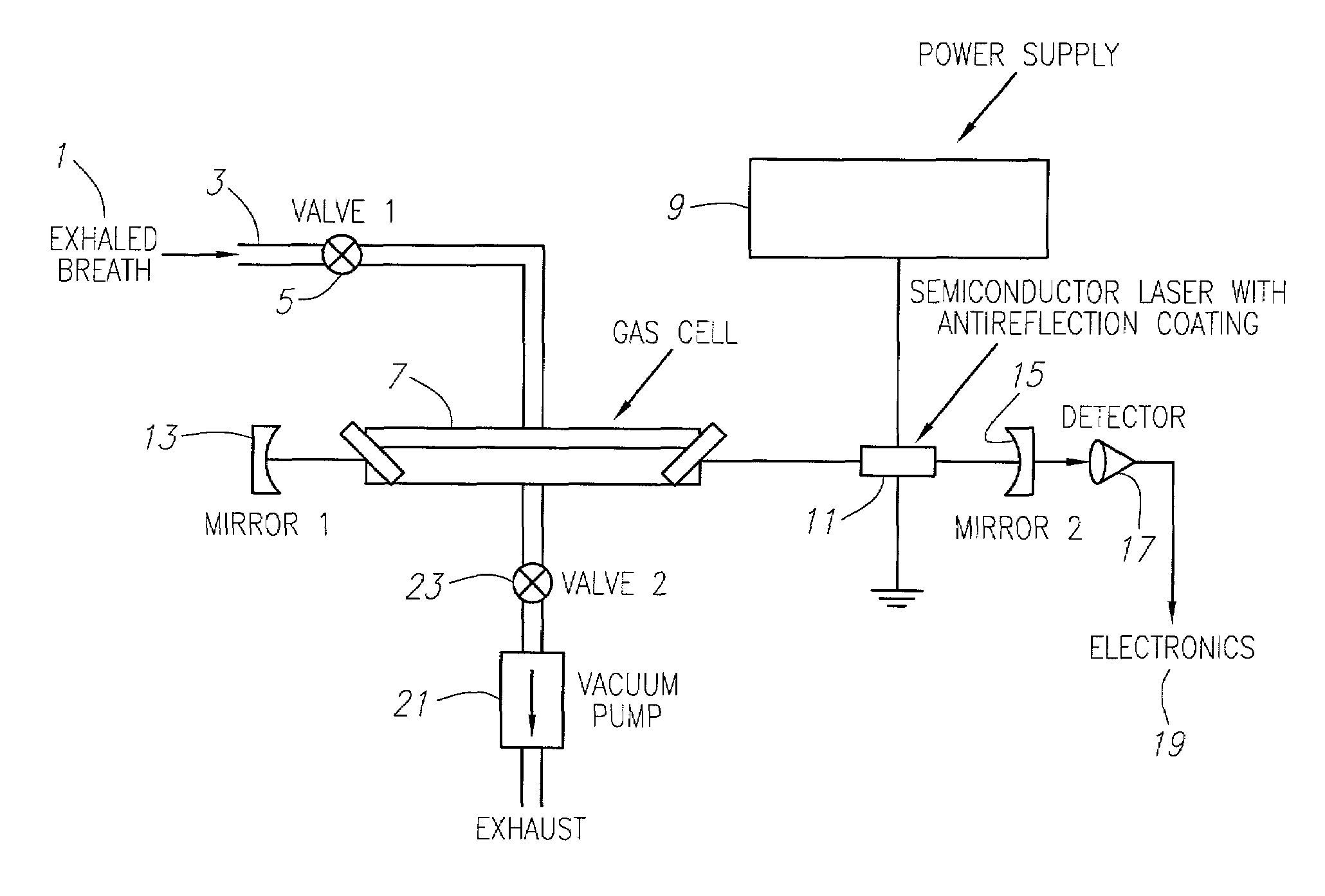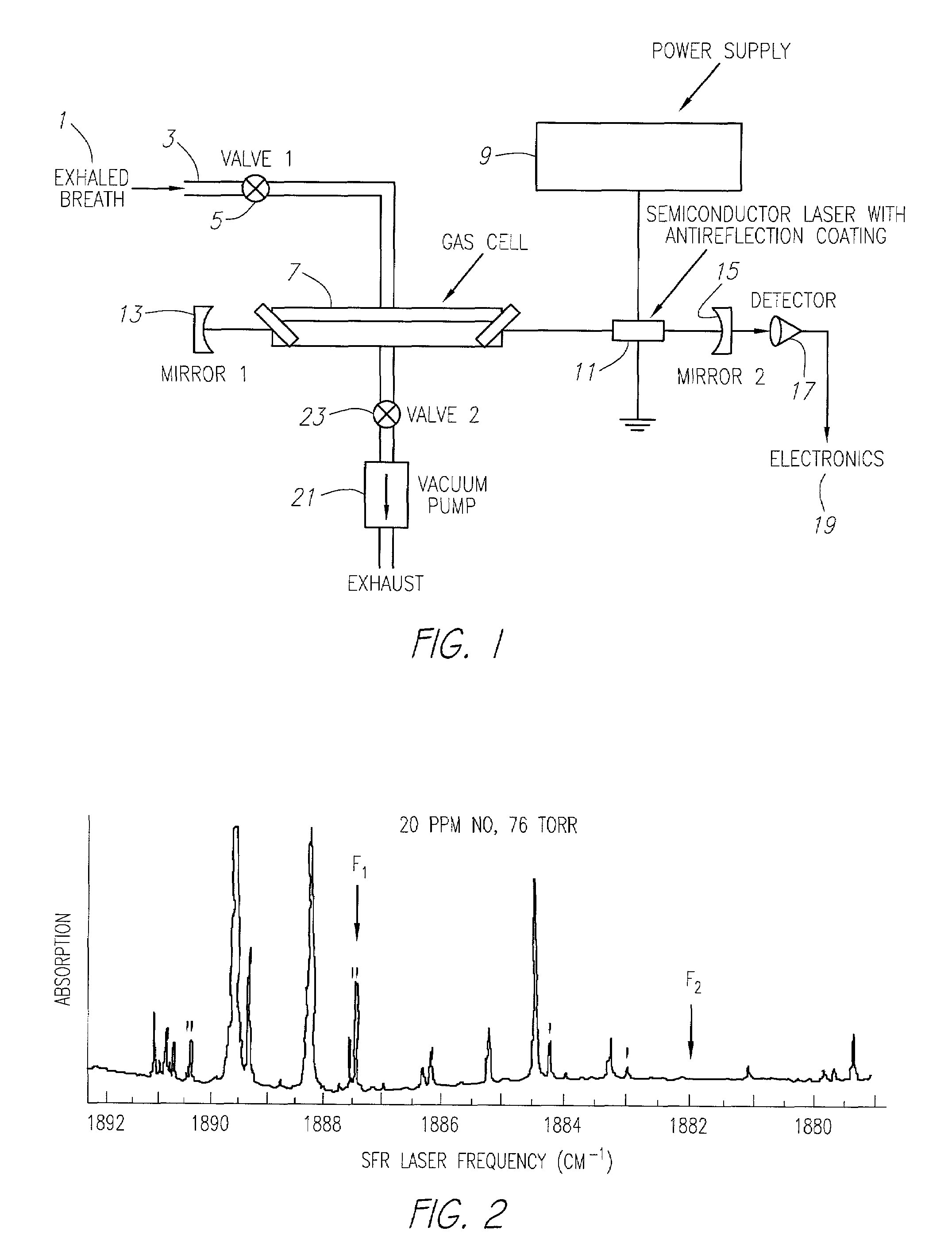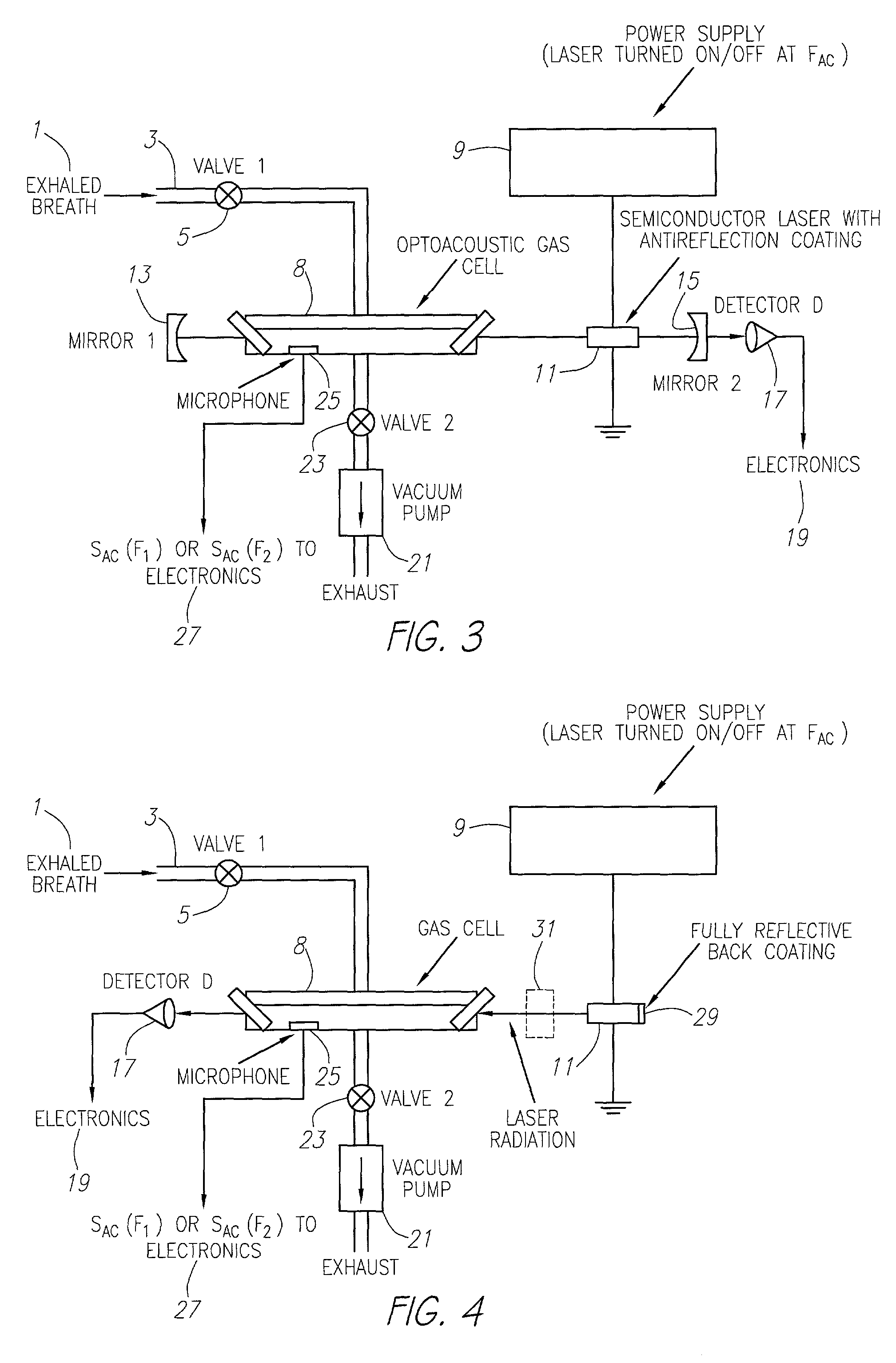Diagnostic method for high sensitivity detection of component concentrations in human gas emissions
- Summary
- Abstract
- Description
- Claims
- Application Information
AI Technical Summary
Benefits of technology
Problems solved by technology
Method used
Image
Examples
Embodiment Construction
[0045]In the embodiment of the invention illustrated in FIG. 1, a gas sample of exhaled breath 1 suspected of containing a specified component is drawn through a conduit 3 and a valve 5, and into a gas cell 7 by means of a vacuum pump 21. The gas pressure in the gas cell 7 may be adjusted by the relative openings of the valves 5, 23, with the gas pressure preferably being between 10 Torr and 500 Torr.
[0046]A power supply 9 powers a tunable laser 11, preferably a semiconductor laser with an operational output of at least 1 mW (milliwatt), having anti-reflection coatings and capable of operating near at least one fundamental absorption peak frequency of the specified component being measured. A laser with an output of at least 1 mW enables the concentration of the specified component to be measured within approximately 1 ppB in approximately ten seconds of operating time. The type of laser used may vary depending upon the particular needs of the user and includes but is not limited to...
PUM
 Login to View More
Login to View More Abstract
Description
Claims
Application Information
 Login to View More
Login to View More - Generate Ideas
- Intellectual Property
- Life Sciences
- Materials
- Tech Scout
- Unparalleled Data Quality
- Higher Quality Content
- 60% Fewer Hallucinations
Browse by: Latest US Patents, China's latest patents, Technical Efficacy Thesaurus, Application Domain, Technology Topic, Popular Technical Reports.
© 2025 PatSnap. All rights reserved.Legal|Privacy policy|Modern Slavery Act Transparency Statement|Sitemap|About US| Contact US: help@patsnap.com



